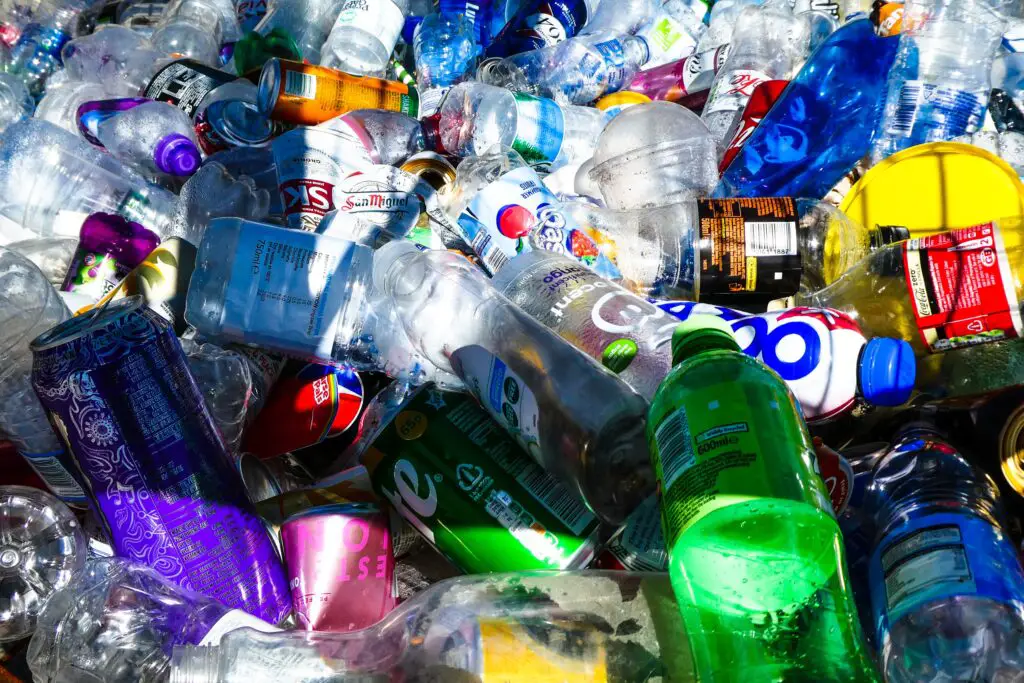Recycling is a great way to help preserve natural resources, and reduce waste and the amount of waste being sent to landfills. By reusing materials instead of discarding them, we can reduce the amount of waste we create and decrease the demand for new products or resources. This can help to reduce pollution and conserve space in landfills.
While recycling is great for the environment, many people are unsure what they can recycle and how to properly sort their items. The most common way to recycle your waste items at home is through dry mixed recycling.
Dry mixed recycling is a method of recycling that involves collecting materials such as paper, metal, plastic, and glass, and processing them so that they can be used to make new products. This type of recycling does not require the materials to be separated into different containers or bins, as is typically the case with traditional recycling methods.

Instead, all of the materials are mixed together and then sorted and processed at a recycling facility. Dry mixed recycling is a convenient and efficient way to recycle a variety of materials, and it can help to reduce waste and conserve natural resources.
How does dry mixed recycling work?
At the facility, the mixed material is typically run through a series of machines that separate the different types of materials based on their physical properties, such as size, shape, and density. For example, a machine called an eddy current separator can be used to separate metals from non-metals by using a powerful magnetic field
Once the materials have been separated, they are cleaned and processed further so that they can be used to make new products.
What can go in dry mixed recycling?
Dry mixed recycling bins are used to collect paper, metal, plastic, and glass. Some examples of items that can be placed in dry mixed recycling bins include newspapers, magazines, junk mail, cardboard boxes, plastic bottles, glass bottles, jars, and aluminum cans.
It is important to check with your local recycling program to determine which materials are accepted in your area, as the specific materials that can be recycled may vary depending on the facilities and technologies available in your region.
In general, however, dry mixed recycling bins are a convenient and efficient way to recycle a wide range of materials.
What cannot be recycled?
You should always check with your local recycling facility on which items you can include as it may be different depending on the equipment your facility has.
Using my local facility as an example, I have created a list of the items that you can recycle and the things that should not go into your recycling bin.
| RECYCLE | DON’T RECYCLE | |
|---|---|---|
| PAPER | Papers, paper bags, cardboard, magazines, newspaper, printer paper | Milk cartons, paper with plastic coatings, cardboard with food waste (such as pizza boxes or paper towels), tissue paper, gift bags, bows/ribbons, wrapping paper |
| PLASTIC | Plastics that are numbered 1 and 2 only | Plastic grocery bags or other store bags, bubble wrap, ziploc bags, plastic wrap or styrofoam, plastic toys |
| METAL | Drink cans, aluminum cans, metal caps, tin cans | |
| GLASS | ALL types of glass | Broken glass |
| OTHER | Batteries, electronics, cords, light bulbs |
Tips for recycling
- Reduce the amount of waste you generate: The first step in recycling is to reduce the amount of waste you create in the first place. This can be done by using reusable items instead of disposable ones and by purchasing products made from recycled materials.
- Check with your local recycling program to determine which materials are accepted: Not all materials can be recycled, and the specific materials that can be recycled may vary depending on the facilities where you live. Contact your local recycling program to find out which materials are accepted in your area and which items to leave out.
- Rinse and clean your recyclables: Before placing items in your recycling bin, make sure to rinse them off and remove any excess food or debris. This will help to keep your recycling bin clean and prevent contamination of the recycled materials.
- Dispose of hazardous materials properly: Certain items, such as batteries, light bulbs, chemicals, and electronic waste cannot be recycled and must be disposed of properly. Contact your local recycling program or household hazardous waste facility for information on how to dispose of these items safely
By following these tips, you can help to make the recycling process more efficient and effective, and contribute to the conservation of natural resources.
What happens if you throw away recyclable items?
If you throw away recyclable items, they will typically end up in a landfill. A landfill is a site where waste is deposited and then covered with soil. Landfills are designed to contain and isolate waste, but they can also have negative environmental impacts.
For example, landfills can produce methane, a potent greenhouse gas, and leach a liquid that can contaminate groundwater. In addition, landfills take up a significant amount of space and can be unsightly and unpleasant.
By throwing away recyclable items, you are contributing to the waste that goes into landfills and you are missing an opportunity to conserve natural resources and reduce pollution.
Instead of throwing away recyclable items, consider recycling them so that they can be used to make new products and reduce the demand for raw materials.
